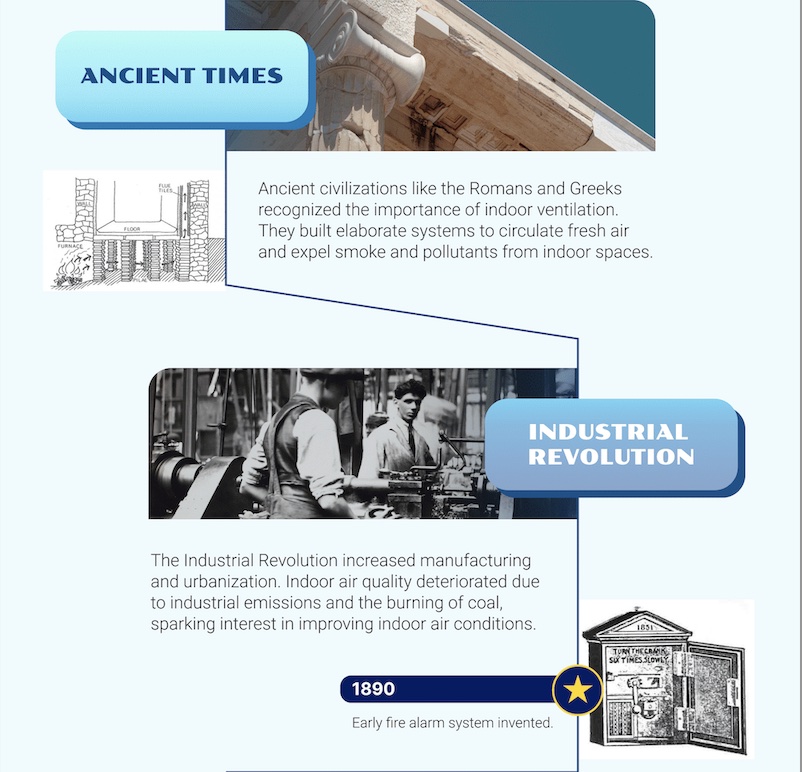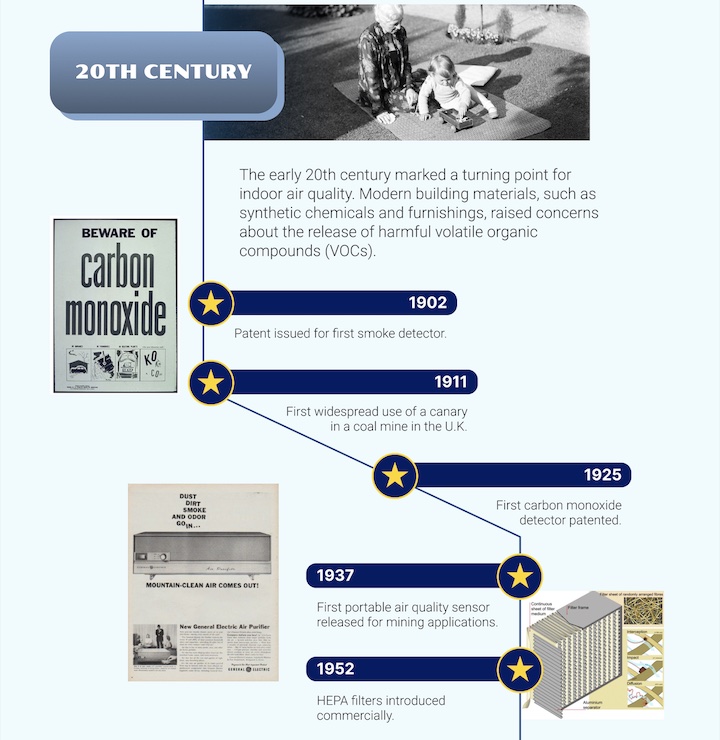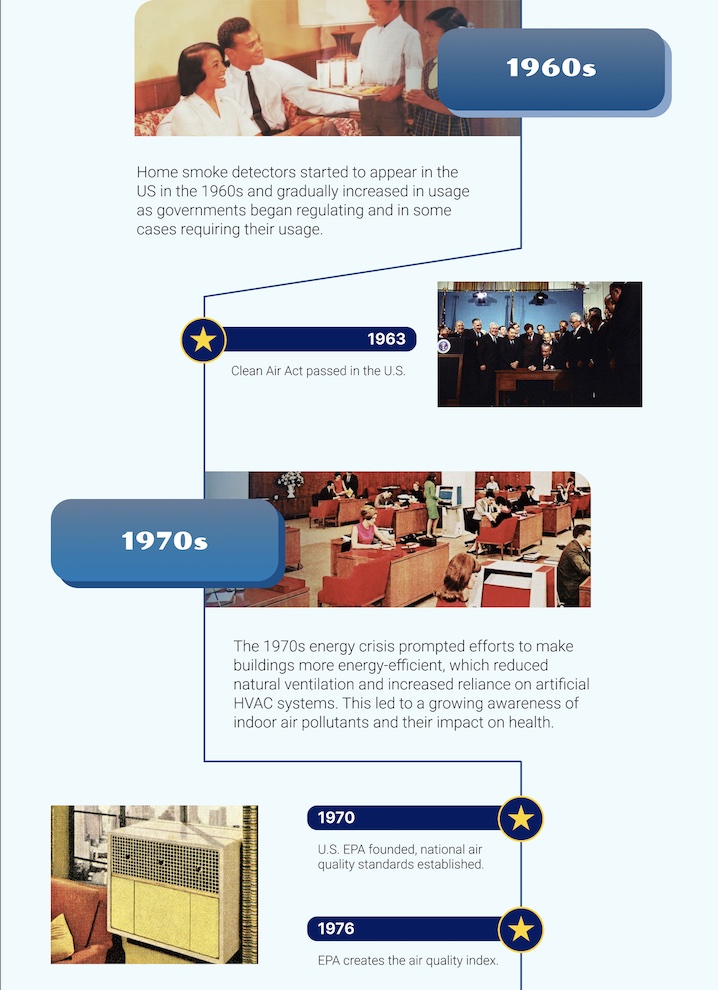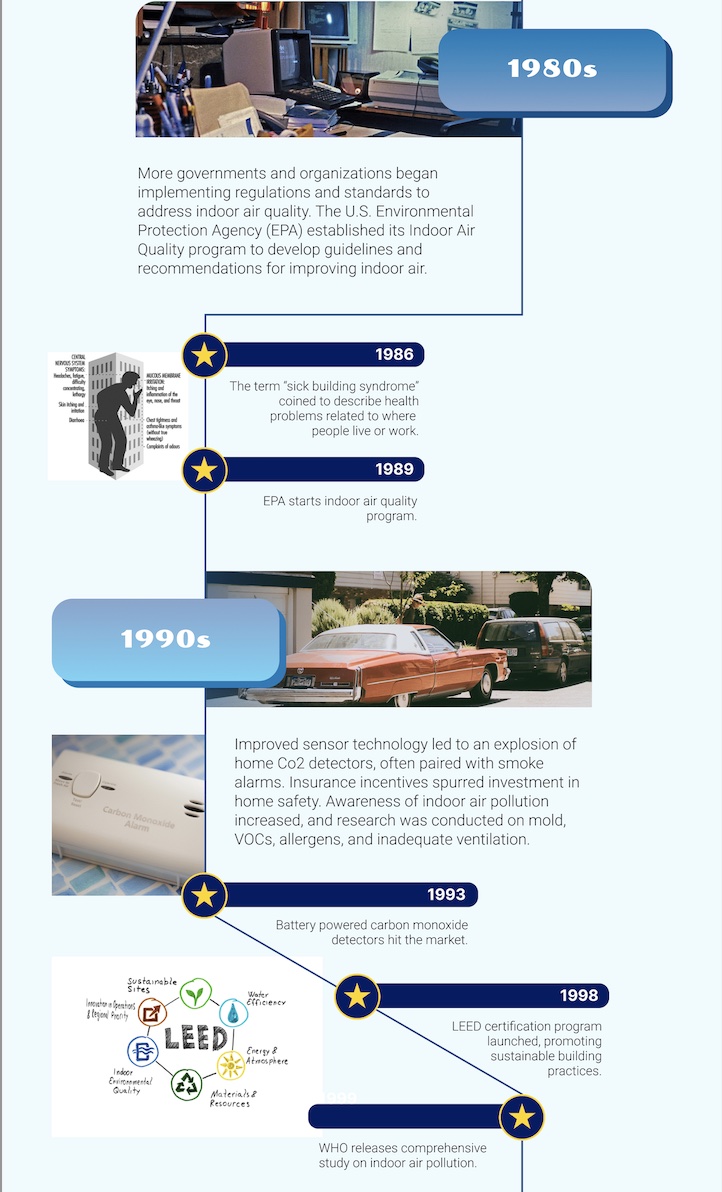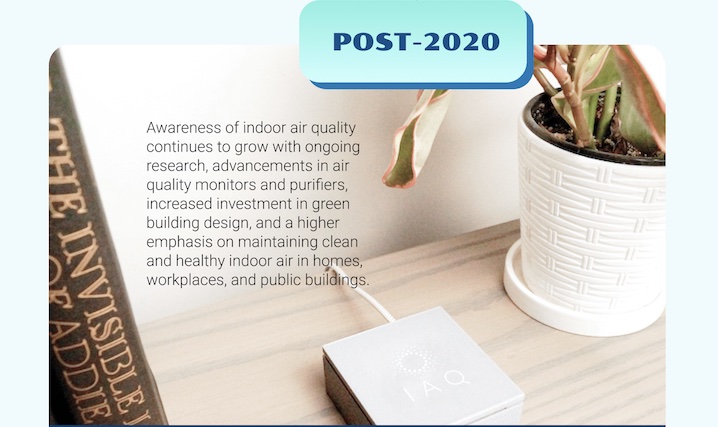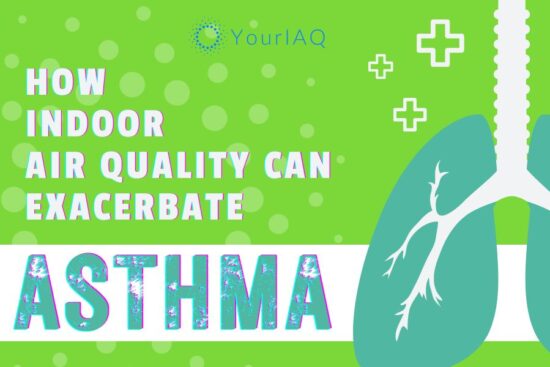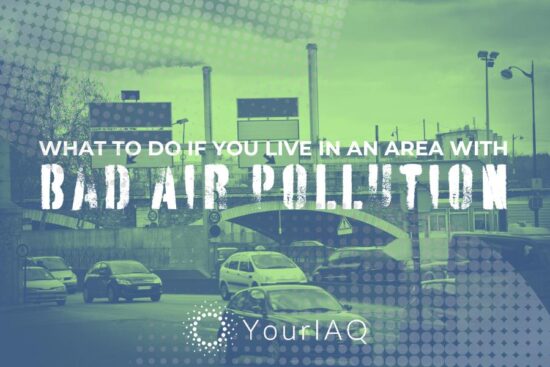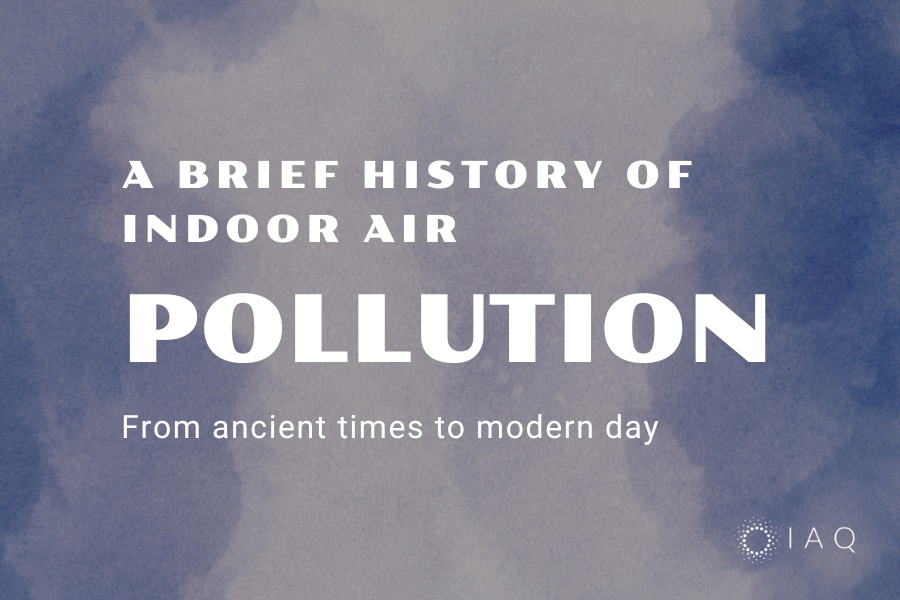
While concerns about indoor air quality may seem like a product of the modern world, the history of indoor air pollution dates back to ancient times. In this original infographic from IAQ, we explore how our understanding and management of indoor air quality have evolved over thousands of years, leading to the current surge in awareness and the rapid growth of sales for air monitoring and purification systems. From ancient times to the present day, check out these milestones that have shaped our quest for clean indoor air.
Click for full infographic or grab the embed code at the bottom of the page.
Ancient Times
Ancient civilizations like the Romans and Greeks recognized the importance of indoor ventilation. They built elaborate systems to circulate fresh air and expel smoke and pollutants from indoor spaces. [1]
Industrial Revolution
The Industrial Revolution increased manufacturing and urbanization. Indoor air quality deteriorated due to industrial emissions and the burning of coal, sparking interest in improving indoor air conditions. [2]
20th Century
The early 20th century marked a turning point for indoor air quality. Modern building materials, such as synthetic chemicals and furnishings, raised concerns about the release of harmful volatile organic compounds (VOCs). [3]
1960s
Home smoke detectors started to appear in the US in the 1960s and gradually increased in usage as governments began regulating and in some cases requiring their usage. Meanwhile, the Clean Air Act passed in 1963. [4]
1970s
The 1970s energy crisis prompted efforts to make buildings more energy-efficient, which reduced natural ventilation and increased reliance on artificial HVAC systems. This led to a growing awareness of indoor air pollutants and their impact on health. [5]
1980s
More governments and organizations began implementing regulations and standards to address indoor air quality.The U.S. Environmental Protection Agency (EPA) established its Indoor Air Quality program to develop guidelines and recommendations for improving indoor air. [6]
1990s
Improved sensor technology led to an explosion of home Co2 detectors, often paired with smoke alarms. Insurance incentives spurred investment in home safety. Awareness of indoor air pollution increased, and research was conducted on mold, VOCs, allergens, and inadequate ventilation. [7]
2000s
The 2000s saw increased awareness of pollution-related diseases. The advent of smart home technology and the Internet of Things (IoT), drove sales of air quality sensors, air purifiers, and other home safety devices. [8]
2010s
The Covid 19 pandemic and increased time spent indoors, as well as an increasing frequency of catastrophic forest fires, are a few factors that led to an explosion of indoor air quality awareness and investment. [9]
Post-2020
Awareness of indoor air quality continues to grow with ongoing research, advancements in air quality monitors and purifiers, increased investment in green building design, and a higher emphasis on maintaining clean and healthy indoor air in homes, workplaces, and public buildings.
How the History Affects Us Today
Reflecting on the past, it’s clear that managing indoor air quality is an issue closely tied to human health and well-being. It’s also not going away. In late 2023, the World Health Organization (WHO) is set to host its inaugural conference on indoor air quality, underscoring the growing global recognition of its importance.
As this awareness grows, it’s important to recognize that managing healthy indoor air starts with knowledge. Knowing what is in the air you breathe every day is the first step towards taking action. With IAQ, you can measure more than 20 indoor air pollutants and uncover opportunities to improve your own health and safety. Together, we can embrace the past, tackle the present, and shape a future where indoor air quality is prioritized for the well-being of all.
The Complete Infographic
(Click infographic to enlarge.)
Share this Image On Your Site
Copy embed code
